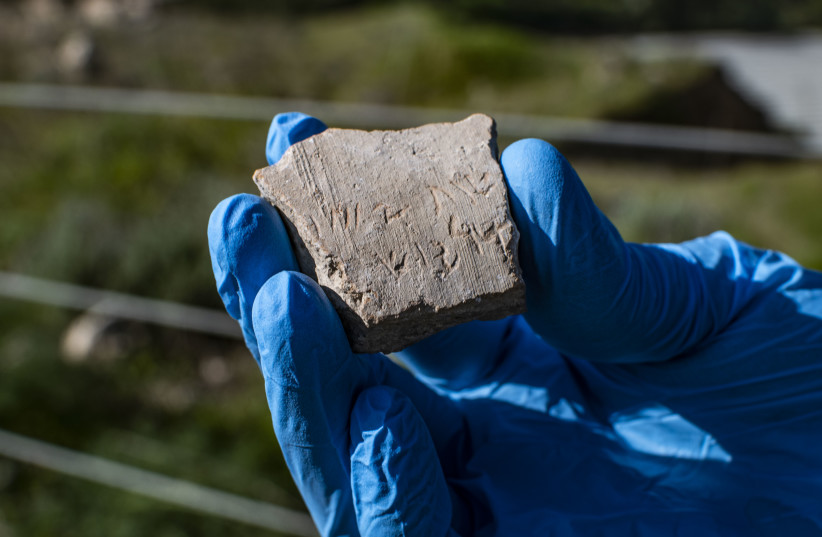Purim came early for the Israel Antiquities Authority this year. Last week, ahead of the holiday that starts tonight, the IAA released a press release about an exciting find, which fit in well with the festival.
The IAA announced that an inscription bearing the name of the Persian King Darius the Great had been found in the Tel Lachish National Park, in the first discovery of an inscription bearing the king’s name anywhere in Israel. Darius the Great was the father of King Ahasuerus, also known as the biblical Achashverosh from the story of Purim and the Book of Esther, hence, the story was particularly timely – if only it had been true.
The discovery of the potsherd was made by Eylon Levy, the international media advisor to President Isaac Herzog, who happened across it when visiting the site with a friend.
“When I picked up the ostracon and saw the inscription, my hands shook. I looked left and right for the cameras because I was sure someone was playing an elaborate prank on me,” Levy said.
“When I picked up the ostracon and saw the inscription, my hands shook. I looked left and right for the cameras because I was sure someone was playing an elaborate prank on me.”
Eylon Levy
It wasn’t a prank, as it happens, and Levy rightfully should have been excited over his discovery. But it was a reminder that when something seems too good to be true, it might be so for a reason.

On Friday, two days after the fanfare around the discovery, the IAA issued a retraction and an apology. The inscription was not authentic.
An authentic apology for an inauthentic inscription
Following widespread publication of the story, an expert who participated in the excavation last August contacted the IAA and admitted that while demonstrating to a group of students the manner in which sherds were inscribed in ancient times, she left the sherd at the site, which led to the erroneous identification.
The mistaken publication of the find is on the one hand understandable: The potsherd stemmed back to the right era; the writing was in the right style; and the site is one where findings of this nature and period are to be expected. On the other hand, it is hard to avoid the impression that the IAA was overly eager to publish a discovery that coincided with Purim.
It has become a standard joke among journalists covering the archaeological field that every religious holiday brings a “new” discovery that happens to be fitting for the festival.
To its credit, the IAA immediately owned up to its mistake when the error was found.
“The IAA takes full responsibility for the unfortunate event,” Prof. Gideon Avni, the IAA’s chief scientist, said in a press release. “As an institution that strives for the scientific truth, we are committed to correcting the mistake that was made and making it known to the public. In terms of ethical and scientific practices, we see this as a very severe occurrence. Leaving the newly inscribed sherd on the site was careless, and led to the mistake done by the researchers and distorted the scientific truth. Such cases in archaeological research are very few in number.
“The event illustrates the dangers of adding modern scripts on ancient artifacts – a phenomenon that troubles the entire scientific community for many years. On top of the paleographic examination of the sherd by an experienced epigraphist, the sherd was examined in various laboratories and found to be ancient. This once again proves that only finds discovered in controlled archaeological excavations should be considered 100% authentic. All other finds should raise questions regarding their authenticity.”
The Israel Antiquities Authority promised to “refresh proper procedures and policies with all foreign expeditions working in the country” following what it called “this unfortunate occurrence.”
We are pleased that the IAA took the incident seriously and is intent on preventing a repetition of such an embarrassing mistake. It is not only the credibility of the national antiquities authority that is at stake, but also the credibility of the country itself. Such cases cast doubts on all other dramatic findings – particularly those released for specific festivals.
There is a plethora of genuine, exciting archaeological findings relating to all the different eras represented in this region. The IAA must curb its enthusiasm and double and triple check its findings before publication. Unfounded stories about ancient artifacts should remain buried.
